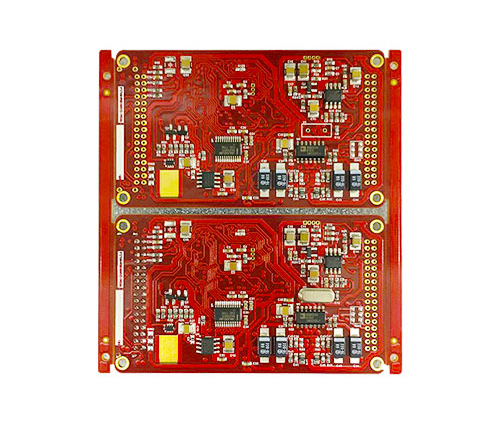Nine rules for high-speed PCB signal routing
In high-speed PCB design, critical high-speed signal lines such as clocks need to be shielded. If there is no shielding or only part of it is shielded, it will cause EMI leakage. It is recommended that shielded wires be drilled and grounded every 1000mil.
Rule 2
High-speed signal routing closed-loop rules
As the density of PCB boards becomes higher and higher, many PCB LAYOUT engineers are more likely to make a mistake during the routing process, that is, high-speed signal networks such as clock signals produce closed-loop results when routing multi-layer PCBs. , such a closed-loop result will produce a loop antenna, increasing the radiation intensity of EMI.
Rule three
Open-loop routing rules for high-speed signals
Rule 2 mentions that the closed loop of high-speed signals will cause EMI radiation, but the open loop will also cause EMI radiation. In high-speed signal networks such as clock signals, once an open loop occurs during multi-layer PCB routing, a linear antenna will be generated, increasing the radiation intensity of EMI.
Rule 4
Characteristic impedance continuity rules of high-speed signals
For high-speed signals, the characteristic impedance must be continuous when switching between layers, otherwise the EMI radiation will be increased. In other words, the width of wiring on the same layer must be continuous, and the impedance of wiring on different layers must be continuous.
Rule five
Wiring direction rules for high-speed PCB design
The wiring between two adjacent layers must follow the principle of vertical wiring, otherwise it will cause crosstalk between lines and increase EMI radiation. In short, adjacent wiring layers follow the horizontal and vertical wiring directions, and vertical wiring can suppress crosstalk between lines.
Rule 6
Topology rules in high-speed PCB design
In high-speed PCB design, the control of the circuit board’s characteristic impedance and the design of the topology under multiple loads directly determine the success or failure of the product. The diagram shows a daisy chain topology, which is generally beneficial when operating at a few Mhz. Star symmetry of the backend is recommended in high-speed PCB designs.
Rule 7
Resonance rules for trace length
Check whether the length of the signal line and the frequency of the signal constitute resonance. That is, when the wiring length is an integer multiple of 1/4 of the signal wavelength, the wiring will resonate, and the resonance will radiate electromagnetic waves and cause interference.
Rule 8
Return path rules
All high-speed signals must have good return paths. Ensure that the return path of high-speed signals such as clocks is as small as possible. Otherwise, radiation will be increased, and the size of the radiation is proportional to the area enclosed by the signal path and the return path.
Rule 9
Device decoupling capacitor placement rules
The placement of the decoupling capacitor is very important. Unreasonable placement will not achieve the decoupling effect at all. The principle is: be close to the pins of the power supply, and the area surrounded by the power supply traces and ground wires of the capacitor is small.



